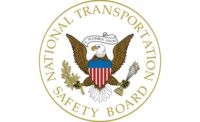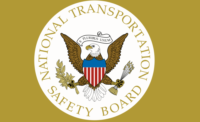Shortly after takeoff on October 2, 2019, on a day with calm winds and good visibility, the pilot of a vintage B-17 plane told air traffic control (ATC) at Bradley International Airport that he wanted to return to the airport because there was a "rough mag" on the No. 4 engine. That indication of engine trouble appears in a preliminary report on the crash that occurred in Windsor Locks, Connecticut moments after that communication – an incident that claimed the lives of the commercial pilot, airline transport pilot, and five passengers. The flight mechanic/loadmaster and four passengers were seriously injured, while one passenger and one person on the ground incurred minor injuries.
The plane was set to conduct a local commercial sightseeing flight in accordance with a Living History Flight Experience exemption granted by the Federal Aviation Administration (FAA).
Flight needed an immediate landing
The report spells out what happened in the moments after the pilot’s indication of trouble with the plane:
- The approach controller asked if the pilot required any assistance, and the pilot replied no.
- The controller instructed the pilot to fly a right downwind leg for runway 6 and confirmed that the flight needed an immediate landing.
- The controller cancelled the approach of another airplane and advised the pilot to proceed however necessary to runway 6.
- The approach controller instructed the pilot to contact the tower controller, which he did. The tower controller reported that the wind was calm and cleared the flight to land on runway 6.
- The tower controller asked about the airplane's progress to the runway and the pilot replied that they were "getting there" and on the right downwind leg.
That was the last thing ATC heard from the accident airplane.
The plane struck approach lights about 1,000 ft prior to the runway, then slammed into the ground and veered right off the runway before colliding with vehicles and a deicing fluid tank.
The wreckage came to rest upright burst into flames that consumed the majority of the cabin, cockpit, and right wing.
Fuel a focus of investigation
One of the NTSB’s areas of inquiry involved verifying that the aviation fuel used in the plane was absent of debris or water contamination. Following the accident, the fuel truck used to service the airplane was quarantined and subsequent testing revealed no anomalies of the truck's equipment or fuel supply. Additionally, none of the airplanes serviced with fuel from the truck before or after the accident airplane, including another airplane operated by the Collings Foundation, reported any anomalies.
The pilot had a total flight experience of 14,500 hours; the co-pilot, 22,000 hours.
The airplane’s most recent progressive inspection was completed on September 23, 2019.






